Issue 14: Look Who's Talking - Ecuador La Pila
Pamela Cevallos, María Elena Bedoya
Reading time: 10 minutes

18.03.2019
María Elena Bedoya and Pamela Cevallos write about the tension between replicas and originals within indigenous material culture as a consequence of their use in the creation of national patrimonies and collections that found dominant discourses and neocolonial dynamics of circulation and exhibition.
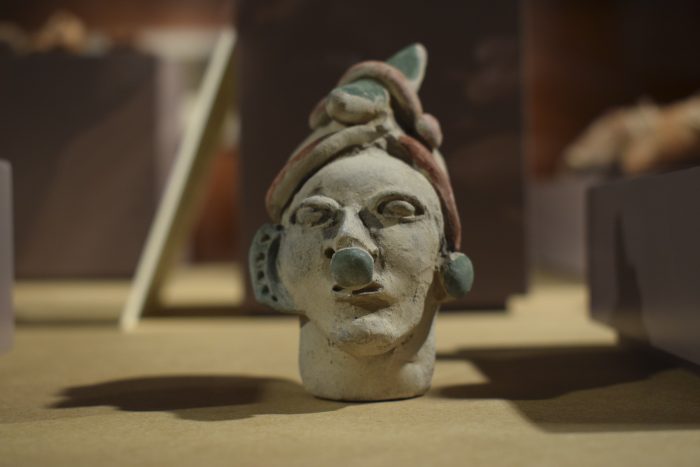
In 1929, in the book titled Politica Conservadora, Jacinto Jijón y Caamaño, a historian and businessman from Ecuador, outlined what would be the ideological orientation of his political program. This character, founder of the Conservative Party of Ecuador, was the head of the National Academy of History, one of the most important historical research institutions in the country. In this publication, beyond his political agenda, he suggests a clear relationship between the functions of the past, tradition, and politics, as a founding and sustaining idea of the nation’s origins.
Tradition, according to Jijón y Caamaño, was the place of order and stability constituted by “little grains of sand” that resist the current of the waves without being able to break their “hardness.” For this author, tradition would give “strength and vigor to the nations,” and like any “invented tradition” as proposed by Hobsbawm,it is an understanding of time that finds its best legacy in the past and the construction of history its best legacy.[1] Not only did the archive become a place to dig and organize these little grains, but the objects came to be disputed by senses anchored to a gaze set on that past.
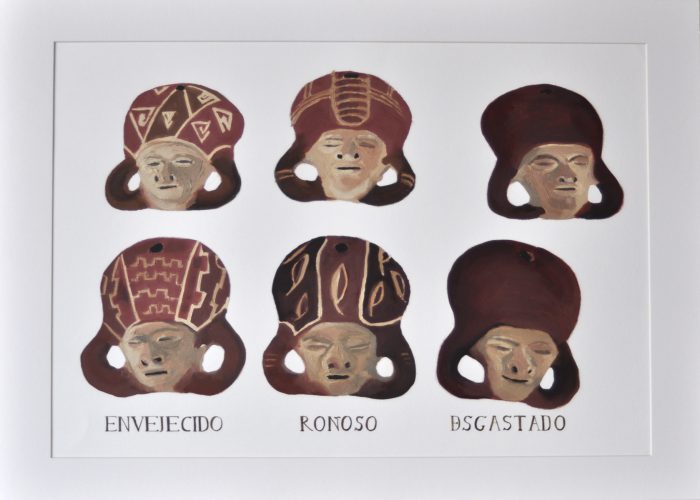
These orientations, created at the beginning of the twentieth century, made it possible to organize the representations of the past, not only as imaginaries of a nation but as a whole material and visual universe intersected by this experience. The great timeline that the Academy itself had founded organized the past into distinct moments: aboriginal times, which would place the first civilizations; colonial era, linked to the Hispanic legacy of the conquest; and the republic, linked to the phenomena of independence. So, each era also organized and gave meaning to its objects.
From this perspective, the representation of the past was allied to the universe of objects in said temporalities and materially represented a form of selection, organization, conservation, display, and exhibition within what was considered “the Ecuadorian” or that was constituted as its own “signs of identity.” These “heritage activations [2]” are linked to the ways in which a type of cultural hegemony is exercised, that is, it operates as a kind of appropriation of the past that is presented as neutral, but at the same time claims to be authentic and attached to the truth. Thus, heritage is a present mode of cultural production that resorts to the past to give a second life to the obsolete, the dead, the disappeared [3] and establishes a dominant discursive method where the objects, which “recreate” a past historically appear as an omnipresence of the nation and proclaim its rescue and care by the community, which is supposed to protect it.
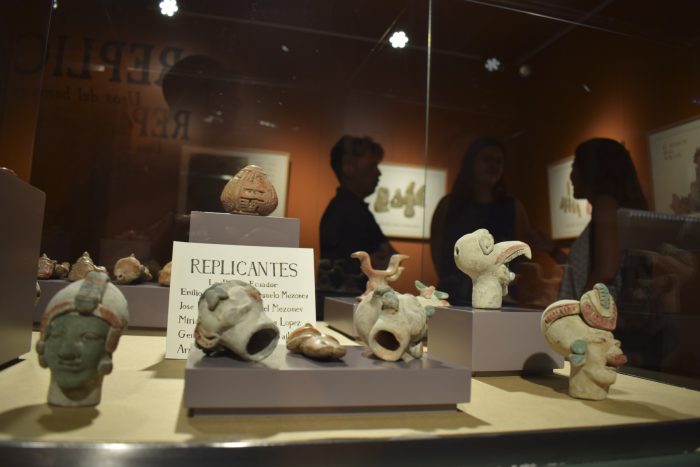
Displays full of “aboriginal cultures” were presented in museums and their collections, as well as in publications throughout the twentieth century. Colonial art and its history became one of the engines of the collecting practice that brought together the wishes of the public cultural institution and the banking entities that flourished thanks to the petrodollars during the seventies. Therefore, heritage had become the best “historical recreation [4]” that condensed the link between past, tradition, and politics, as well as becoming a permanent and mode of consumption of the nation at all levels. School classrooms, museum discourses and narratives, cultural institutes dedicated to its promotion and even the tourism industry turned heritage into a type of consumption, and representation of the past that triumphed throughout the twentieth century.
Under the mantel of rescuing national heritage adn encouraging the creation of national museums, the sale of pre-Hispanic, colonial, and republican objects to the state was promoted in Ecuador in the mid-twentieth century. This stimulated an unprecedented trade of cultural objects, which paradoxically encouraged practices such as the huaquería or, in other words, the illegal excavation of archaeological sites for commercial purposes. These dynamics molded national collections, such as those of the Museos del Banco Central of Ecuador, and conditioned a procurement policy based on aesthetic criteria, which was evidenced in the use of categories such as “pre-Columbian art” to refer to the pre-Hispanic material culture.
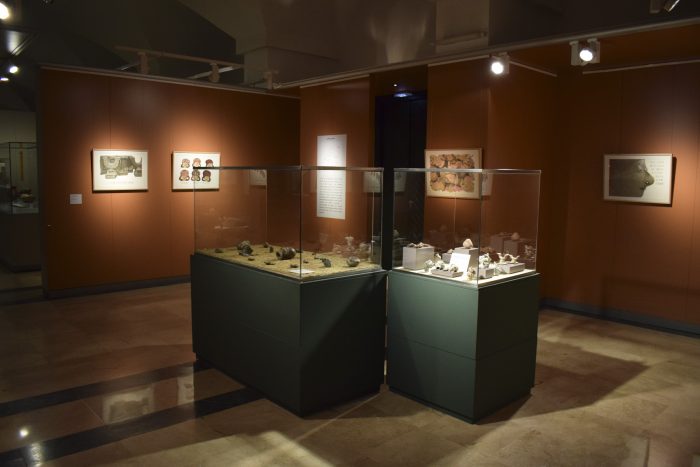
This state action over the heritage had other effects in the rural communities, mostly those near archaeological sites, that oriented their economies to the search and sale of this type of objects. In several places on the Ecuadorian coast, huaquerismo became a business that sporadically displaced more traditional activities such as agriculture. In addition to the social impacts, this phenomenon allows us to see other possible appropriations of the pre-Hispanic past that have constantly stressed and complexed this discourse of heritage. In certain communities, on the one hand, there is an everyday approach to that past and a recognition of aspects of identity and, on the other hand, there is a desacralization of archaeological objects as they were subject to economic exchanges necessary for subsistence, in a constant process of negotiation with the state and other actors, such as intermediaries and private collectors.
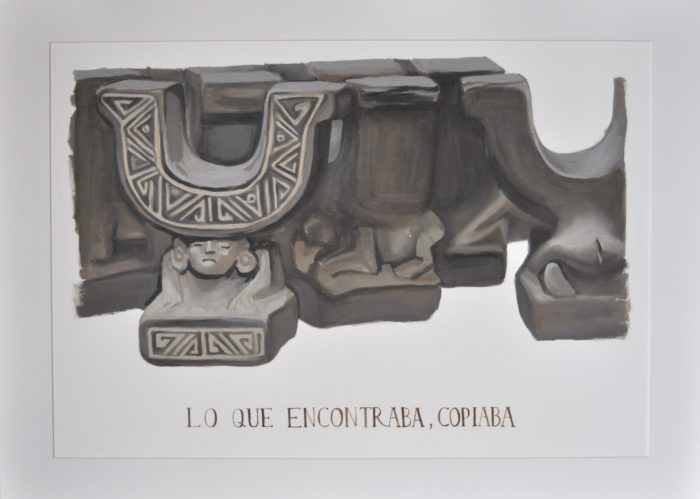
Curatorially practices, as a the collective la-scolaris.org, we began a series of interventions on how heritage and collections reproduce in many ways these dominant discourses that have marked the dynamics of the last century. Thus, the curatorial project: Replicantes. Usos del barro en La Pila in the Museo de América (Madrid) emerged, presented between July and September 2018. This proposal was anchored to the artistic and ethnographic research of Pamela Cevallos in the community of La Pila [5] (located in the province of Manabí on the Ecuadorian coast) and the curatorship of Malena Bedoya. This artistic and ethnographic research, by Cevallos, focused on locating various practices related to archaeological objects; like the boom of public collecting of the mid-twentieth century, the huaqueria, the production and marketing of crafts, and artistic practice.
They are not remnants of a remote past but objects that question the official appropriation of “Ecuadorian material culture” to reinvent themselves as an alternative narrative of the community.
The Museo de América houses one of the most interesting heritage collections of the colonial era, besides being an institution created within the most rotten type of Spanish conservatism of the dictator Franco, where the “greatness” of the raza hispánica was considered the phenomenon of the conquest and colonization of America. In all the complexity of this museum space and from an exercise of institutional critique, this project explored in the territories of origin of the archaeological pieces the link between its inhabitants and these remains and the complex transits to the museum. This curatorial process aimed to make the museum historicize itself through an exercise of what Mario Rufer would point out as “denaturalization of the position / stance” [6], that is, of how things can be said and in what context, from an opening within the available possibilities in this curatorial practice—with, from and for the institution.
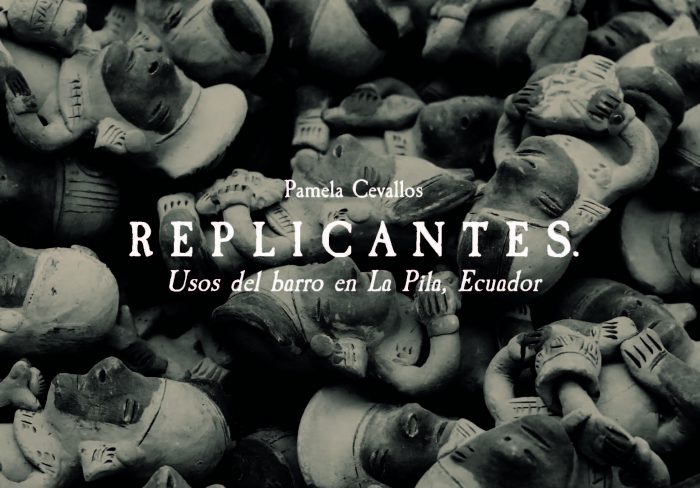
The relationship established with the community of La Pila, one of the places of the greatest archaeological extraction in the country, distorts the classic aseptic image of these objects in the museums’ collections and places the subject’s experience with these vestiges at the center of the discussion. This proposal sought to leave behind the idea associated with the consumption of these archaeological goods “in replicas” to lead it to the very poetics of the trade. The clay molds used, many of “authentic” pre-Hispanic origin, have contemporary uses for the artisans of La Pila, always skirting the limits between the lawful, the illicit, the desire, and the fantasy of possessing pieces that bring us closer to that past. In this way, we sought to account for the relationship between authenticity and falsification of pre-Hispanic objects. Through the use of the own illustrative techniques of scientific representation of the archaeological pieces generated since the 19th century, we tried to delocalize the function of these visualities in their quality of showing “the real” as “scientific evidence.”
Thus, in the series titled Advertencias para replicar [7], the photographic records of Cevallos’ fieldwork in the workshops of the artisans of La Pila were translated into the language of painting on paper. The images were accompanied by phrases of anonymous testimonies collected in interviews that were written with a “colonial typography” taking up the aesthetics of several of the works exhibited in the permanent halls of the museum itself. The quotes conveyed the categories used by artisans to refer to their craft. For example, they said: “What I found, I copied”, “The doll business,” “As an artisan, one does not have the fault, it is with the buyer.” This last phrase caused indignation of a civil worker of the Instituto Nacional de Patrimonio Cultural (INPC) in Quito, in a inspected the artistic work of Cevallos and the crafts of La Pila prior to leaving the country. The current patrimonial policies have been focused on the illicit trafficking and have not managed to broaden their conception of this trade and its circulation. On their behalf, artisans have incorporated the romantic discourses of the imagined nation as a strategy that allows them to exist while they boycott the authenticity of their objects. Its activity is an act of survival in the face of the structural conditions of poverty, the absence of basic services and the absence of the state.
The intervention into the Museo de América, conceived as a site-specific installation, contemplated the exhibition of objects from the museum’s collection and objects made by the artisans from La Pila. Our proposal was to exhibit the two types of objects in the same showcases. However, the museum assumed the need to make a clear museographic distinction between “originals” and “replicas.” The objects of the collection were presented in a large showcase, on a layer of yellow sand, as if they were coming out of the ground. The crafts occupied a smaller showcase, and the objects were arranged on gray wooden bases, in an artificial space, with the names of the artisans. The impossibility that the “museum’s originals” and the “La Pila artisans’ originals” could share the same space expresses the underlying weight of the heritage and the shadow of the replica. The artisanal production mobilizes the senses attributed to this materiality in its quality of “authentic objects” towards the notion of resemblance, aging, or the interest of the collector.
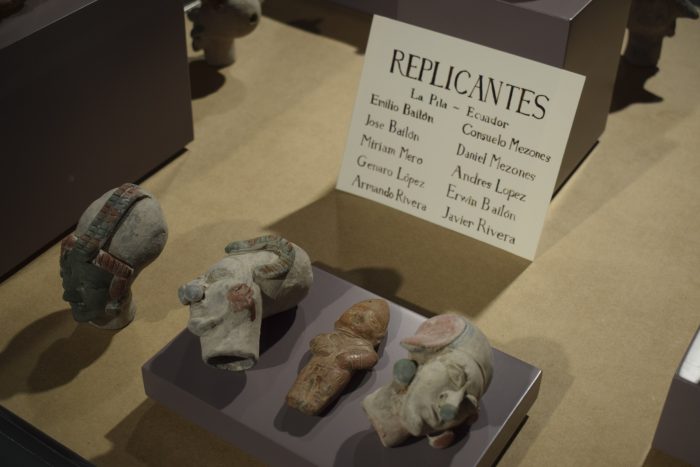
However, originals and replicas inhabit a present and immediate time in the curatorial practice. Several artisans from La Pila conceive their work as “contemporary art.” In this sense, these practices mitigate the nation’s timeline that aims to determine the aboriginal, colonial or republican, and reveals the artificiality of this classification. The pottery artisans refer to the archaeological pieces as “little things of the ancients” in a daily coexistence with these objects. They are not remnants of a remote past but objects that question the official appropriation of “Ecuadorian material culture” to reinvent themselves as an alternative narrative of the community.
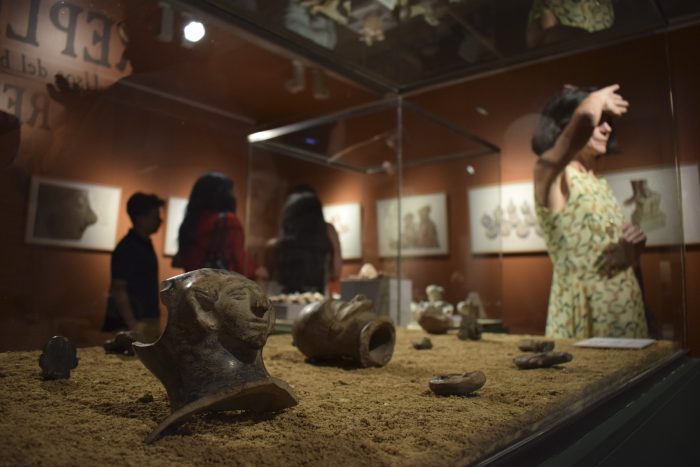
Beyond a resistance to the colonial pattern that involves the practice of collecting in a museum of this nature, the objects stress, play with, and question from their place in the middle of the permanent script of the rooms of the museum and the poetics of the display of work itself. In one of the phrases heard in the documentary video that accompanied the show, one of the inhabitants of La Pila talks about “almost original replicas,” playing with the meaning attributed to the original value: unique object, cult, and heritage. The replica, under this statement, delocalizes the original/replica binary relationship and enables a playful political movement, or as Rufer would say, “defetichizes the patrimonial bond” [8], picking up the diverse dimensions—trade, craft, huaquería—of its practice, in tension with the hegemonic imaginary of it, based on the aseptic notion of its existence as an archaeological science and cultural heritage.
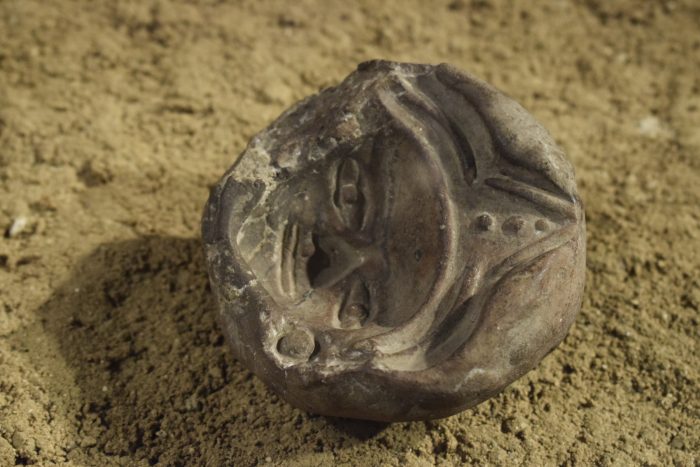
The Replicantes project was an institutional critique trial that appealed to the complexities of the museum itself—of its own history and “origin” of the collections —to play with the awareness on origin, originality, and authenticity. The Museo de América represents not only a nucleus of these civilizing devices of the coloniality of power, but also enters into the critical and complex dynamics of the discussion about the conformation of its own collections that befalls today most of the European continent. The intervention promoted a performance with the objects of the museum itself, shifted several lines of reflection on this heritage, and made it possible to show the seams of the relationship between these vestiges and their origin in a transatlantic dimension of institutional collecting.
Eric Hobsbawm and Terence Ranger, La invención de la tradición (Barcelona: Crítica, 2002).
Llorenç Prats. “Concepto y gestión del patrimonio local” in Cuadernos de antropología social, Buenos Aires, (July 2005), n.21, p. 17–35. <http://www.scielo.org. ar/scielo.php?script=sci_ arttext&pid=S1850-275X2005000100002 &lng=es&nrm=iso>. [Accesed January 16, 2019].
Barbara Kirshenblatt-Gimblett, “Theorizing Heritage” in Ethnomusicology, Vol. 39, N. 3, 1995, pp. 367–380.
Jerome de Groot, Consuming History. Historian and Heritage in Contemporary Popular Culture (London: Routledge, 2016).
Pamela Cevallos has developed several projects in La Pila community since 2015. In 2018 she carried out the Museo Histórico y Artesanal La Pila project with a creation grant of the Premio Mariano Aguilera. The project consisted of an implementation of a permanent museum consisting of a collection of replicas donated by artisans and the community. More information: https://www.la-scolaris.org/ museohistoricoyartesanallapila.
Frida Gorbach and Mario Rufer, coords. (In)disciplinar la investigación. Archivo, trabajo de campo y escritura (Mexico: Universidad Autónoma Metropolitana and Siglo XXI, 2016).
The title of this work parodies the classic work of the Ecuadorian historian Federico González Suárez written in 1914 called Advertencias para buscar, coleccionar y clasificar objetos arqueológicos pertenecientes a los indígenas antiguos pobladores del territorio ecuatoriano, Quito: Imp. del Clero.
Mario Rufer, “El patrimonio envenenado: una reflexión ‘sin garantías’ sobre la palabra de los otros” in (In)disciplinar la investigación. Archivo, trabajo de campo y escritura, Frida Gorbach and Mario Rufer, coords. (Mexico: Universidad Autónoma Metropolitana and Siglo XXI, 2016).
Comments
There are no coments available.